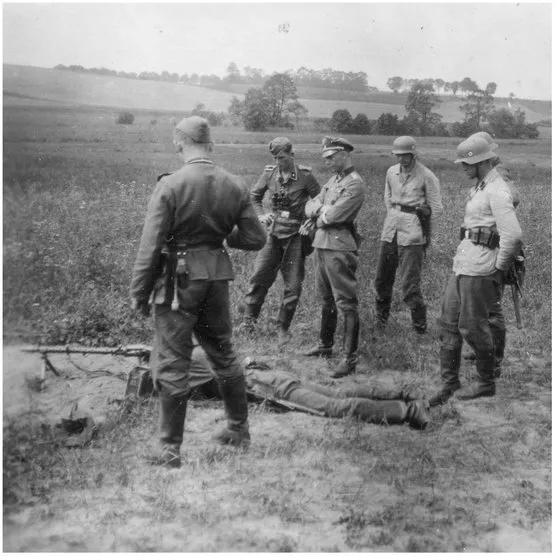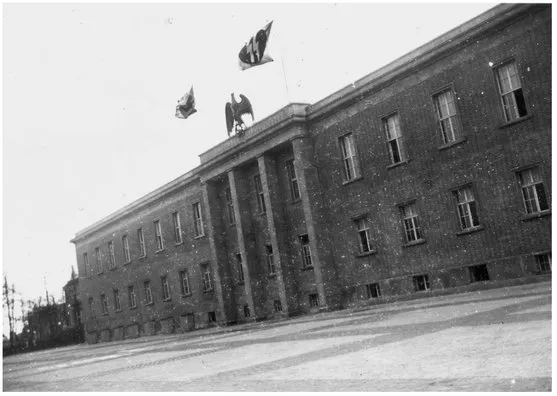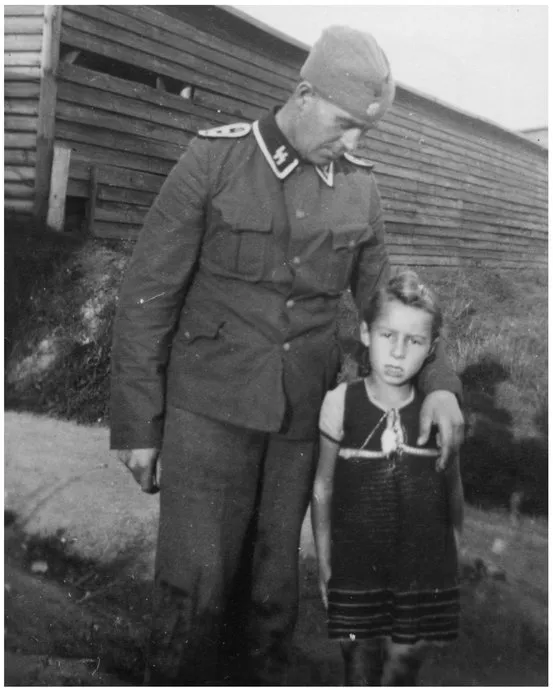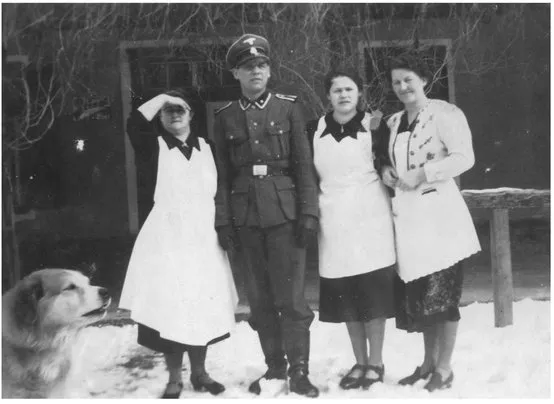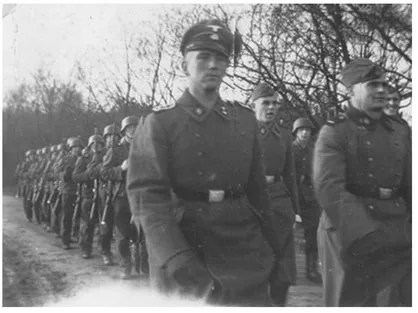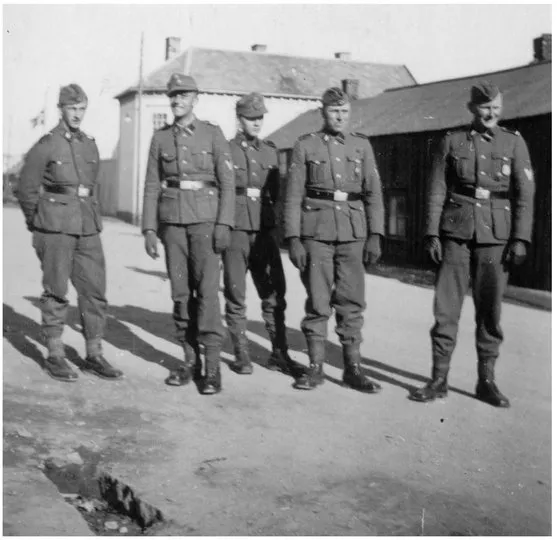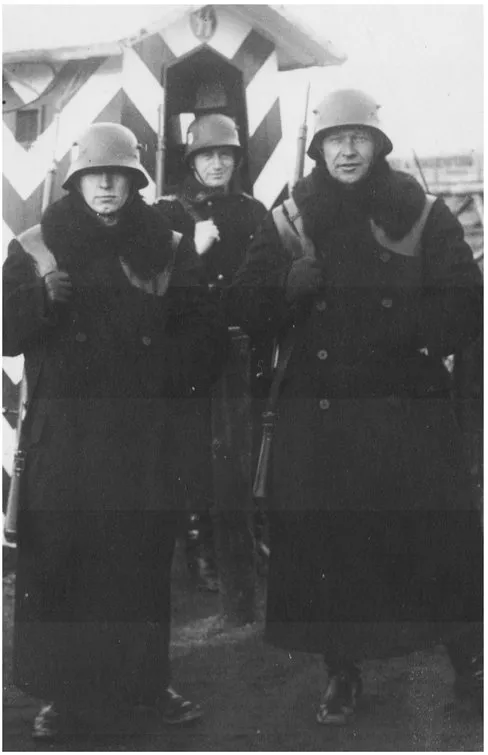![]()
Chapter 1
Recruiting and Training
Commander of the SS, Reichsfuhrer Heinrich Himmler, had made considerable efforts to recruit members of the old German elite into the SS. A number of these new recruits were assigned to the new concentration camps that had sprung up across Germany. A number of new recruits joined the ranks of the black SS order and were trained at places like Dachau concentration camp. Dachau was the first regular concentration camp established by the National Socialist government and was regarded by Himmler as the first camp for political opponents who were seen as an imminent threat to the new German government. Dachau was established on 20 March 1933, and it served as a prototype and model for the other concentration camps that followed. Its basic organisation, camp layout as well as construction of buildings were developed and ordered by SS-Brigadeführer Theodor Eicke. In June 1933, Eicke had been made commander of Dachau concentration camp, and became a major figure in the SS. He was regarded as the architect, builder and director of the concentration camp system and ruled it with an iron fist. As a man he was stocky in appearance, blatantly brutal and ruthless, who gave off an aura of raw energy. It was here that many concentration camp guards were trained and were then assigned to other concentration camps.
Dachau was unlike any prison that the new SS recruits had been accustomed to. Unlike normal prison, the inmates did not know how long their sentence would run. In effect, they led a permanent existence of uncertainty as to when they would see freedom again. Life for the prisoners inside Dachau was brutal. The SS guards were all ordered to follow Eicke’s demand for blind and absolute obedience and to treat each prisoner with fanatical hatred. By perpetually drilling his SS guards to hate the prisoners, they were able to infuse themselves with anger and recrimination and mete out severe punishments. The training these recruits were given at the camp was relentless. Not only did they learn about enemies of the state, but they were also given an in-depth indoctrination in SS philosophy and racial superiority. These ideological teachings were aimed at producing men who ardently believed in the new Aryan order. They had to listen to the commandant regularly lecturing comrades about anti-Semitism. On the bulletin boards inside the SS barracks and canteen he often saw copies of the racist newspaper, Der Stürmer. These propaganda newspapers had deliberately been pinned up in order to ferment hatred and violence especially against the prisoners.
All of the guards at Dachau were indoctrinated into an almost fanatical determination to serve the SS with blind allegiance. Eicke invested each guard with absolute life-and-death power over all the inmates of the camp. Rule breaking among the prisoners was classified as a crime. It was looked upon as an incitement to disobedience and each guard was given the power to hand out stringent punishments.
All SS guards were given extensive freedom to deal very harshly with any inmates they deemed to have committed a crime behind the wire. In addition to the general physical abuse meted out on the prisoners the camp commandant introduced other measures of cruelty towards these hapless individuals. Prisoners were deprived of warm food for up to four days, they were subjected to long periods of solitary confinement on a diet of bread and water. To supplement these harsh methods Eicke introduced corporal punishment into the daily routine. A prisoner would receive twenty-five strokes with the lash, carried out in the open square on specific orders from the commandant in the presence of assembled SS guards. In order to ensure every SS officer, non-commissioned officer and SS guard was instilled with the same brutal mentality as their commandant, Eicke regularly ensured that each man routinely took to punishing a prisoner with the lash without showing the slightest hesitancy, emotion and most of all, remorse. Only this way could he guarantee that the concentration camp staff would become more hardened and impersonal to the brutal code that Eicke himself had harshly implemented.
Eicke also programmed his guards to show particular hatred against Jews, immigrants, homosexuals and Jehovah Witnesses. Often, they listened whilst the commandant brazenly delivered lectures about what he considered were the most dangerous enemies of National Socialism. He instructed his guards to be brutal predominantly towards the Jews and use whatever violence necessary to keep them in check.
Although some new recruits disliked the brutality of the camp, as a whole they were inspired by its harsh order and discipline. Many were able to bury their emotions and become self-absorbed by the powers of camaraderie and loyalty to the SS. In their mind they saw the following months as a learning curve for their future. In spite of the crude and often brutal values of the SS they were given a clear example to follow. In their view they became increasingly convinced that the camp was the most effective instrument available to destroy all elements hostile to the banner of National Socialism.
The recruits also observed how Eicke had organised the inmates to work and expand the camp’s economic enterprises. They saw how the commandant put to work the prisoners to construct buildings and expand the camp to include a locksmith’s shop, a saddlery and a shoemaking and table shop. Eicke was a great believer that the inmates were able to endure prison with more discipline if they were allowed to work. For him working whilst enslaved was a kind of mystical declaration that self-sacrifice through endless labour brought about a kind of spiritual freedom. It was this slogan and ardent belief that prompted Eicke to display the inscription Arbeit Macht Frei (work makes you free) on the main entrance gate of Dachau.
For these SS guards Dachau was to mould their future in the ranks of the SS. Not only would it offer them a career, but a regular wage too. It also gave them an insight into the complete running of a concentration camp. They learned much from Eicke and the other trainers. Most importantly it strengthened their own beliefs that all the prisoners detained inside the concentration camp system were inferior and implacable enemies of the state against whom the SS were waging an unprecedented war. They had learned that the slightest vestige of sympathy towards those in the concentration camps was regarded as intolerable. They were thus compelled to conceal any type of lingering feeling or compassion against those incarcerated and follow Eicke’s doctrine of being hard.
SS troops during training. Himmler had made considerable efforts to recruit members of the old German elite into the SS. A number of these new recruits were assigned to the new concentration camps that had sprung up across Germany during the 1930s. (HITM)
Photograph of an SS training barracks during the early part of the war. It was from here that some of the Waffen-SS were recruited as guards for the concentration camps. (HITM)
Apart from the various murderous activities of the SS inside the camps, there was also another disturbing side to them relaxing in their barracks or visiting their families and loved ones. Here an SS man poses for the camera with his daughter. (HITM)
An SS man poses for the camera with three female helpers at a concentration camp. The Nazis tried to maintain the illusion of female purity, depicting women as homemakers and nurturing mothers. However, with the coming of total war in 1943, the Nazis had to make changes in their policies towards women. Since German manpower was being squandered on various battlefields and slave labour also proved insufficient, the Nazis were forced to use women in a variety of different capacities, ranging from workers in the war industries to auxiliaries to the fighting troops. One such auxiliary role for women was as SS assistants in the concentration camps. (HITM)
SS guards during training. The SS guards were all ordered to follow Eicke’s demand for blind and absolute obedience and to treat each prisoner with fanatical hatred. By perpetually drilling his SS guards to hate the prisoners, they were able to fill themselves with anger and mete out severe punishments. The training these recruits were given at the camp was relentless. Not only did they learn about enemies of the state, but also given an in-depth indoctrination in SS philosophy and racial superiority. (HITM)
An SS police unit marching, probably during a training exercise. When the Germans unleashed their attack against the Soviet Union on 22 June 1941, the Jewish problem escalated further. To deal with the Jews in Russia special SS police units were formed that consisted of Sipo-SD (Sicherheitspolizei and Sicherheitsdienst – security police and security service) personnel, Waffen-SS units, and police. Progress through the Soviet heartlands was swift and a blood bath against the Jewish population ensued.
A group of SS soldiers outside a concentration camp. By the beginning of the war concentration camps became places where millions of ordinary people were enslaved as part of the war effort. The guards were all ordered to follow blind and absolute obedience and treat each prisoner with fanatical hatred. The concentration camp commandants knew by perpetually drilling their guards to hate the prisoners, they were able to infuse themselves with anger and recrimination and mete out severe punishments. (HITM)
Three SS guards at Gross-Rosen concentration camp. These guards quickly learnt about enemies of the state, and were given an in-depth indoctrination in SS philosophy and racial superiority. (HITM)
SS soldiers at a field kitchen during a training exercise outside a concentration camp. The concentration camp formula for mistreating the inmates generally did not affect any of the guards psychologically. As guards ...

